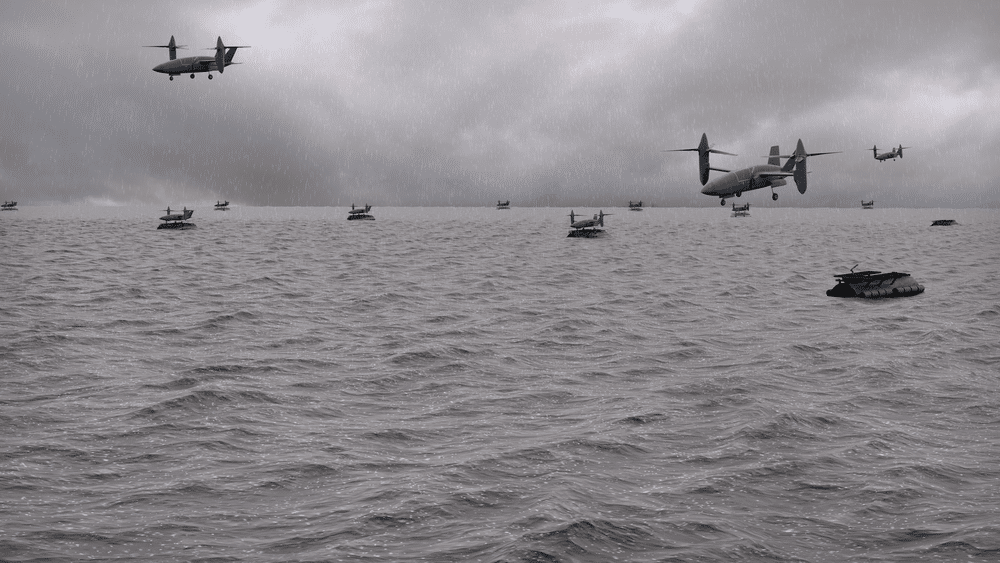Aerospace
Bell and Pratt & Whitney to Collaborate on High-Speed VTOL Propulsion Technology

As industry partners interested in accelerating the future potential of High-Speed Vertical Takeoff and Landing (HSVTOL)technology, Bell and Pratt & Whitney are collaborating on propulsion solutions for the development of HSVTOL technology.
Pratt & Whitney Canada Marks One Billion Flying Hours(Opens in a new browser tab)
Bell continues to work with the U.S. government and its industry partners to reduce risk and develop capability requirements. As Bell continues to build its strong team, we’re having open discussions and collaborating with industry thought leaders, including Pratt & Whitney, to rapidly deliver HSVTOL capabilities to the warfighter.
“We’re excited to dig into HSVTOL propulsion technology research with Bell and showcase what this next-generation capability could bring to USAF and other warfighters,” said Dr. Steven Burd, Director and Chief Engineer of Advanced Military Engine Programs, Pratt & Whitney.
Bell is actively developing innovative vertical lift technologies including the HSVTOL family of vehicles. HSVTOL provides next-generation capability in vertical lift speed, range, and survivability. This type of technology blends the maneuverability of a helicopter with the speed, range and survivability features of a fighter aircraft. Bell’s HSVTOL technology may serve a variety of complex missions in the future battlespace for runway independent agile mobility, SOF infil/exfil, personnel recovery, and Strike/ISR.
“HSVTOL propulsion technology is one of the key technical areas to develop for future capability, and we’re thrilled to leverage expertise from Pratt & Whitney to explore ways to mature technology for these concepts,” said Lee Anderson, Director of Innovation, Bell.
HSVTOL technology leverages existing Bell experience with the development of high-speed vertical lift aircraft, with the Bell 360 Invictus dashing over 200 knots, and the Bell V-280 Valor cruising to over 300 knots. HSVTOL development unlocks next-generation capability for speed, range, and survivability. HSVTOL’s runway flexibility provides the capability to utilize runways with conventional jet takeoff when runways are intact and independence with short field takeoff and vertical takeoff when runways are compromised

Aerospace
Boeing Transfers Rocket Stage to NASA, Paving Way for Human Moon Mission

Boeing has achieved a significant milestone by providing NASA with the second core stage of the Space Launch System (SLS) rocket.
This crucial component, crafted at NASA’s Michoud Assembly Facility (MAF), is set to propel the Artemis II crew into lunar orbit, marking humanity’s return to deep space after a 50-year hiatus.
The monumental Boeing-built rocket stage, the largest element of the Artemis II mission, will embark on a journey aboard the Pegasus barge, traveling 900 miles to NASA’s Kennedy Space Center.
Comparison of two legendary aircraft B777x vs B747 aircraft:Click here
Upon arrival, it will be meticulously integrated with other essential Artemis II components, including the upper stage, solid rocket boosters, and NASA’s Orion spacecraft within the iconic Vehicle Assembly Building. This intricate integration process is a vital step toward the eagerly anticipated Artemis II launch, slated for 2025.
“Boeing-built products helped land humankind on the moon in 1969, and we’re proud to continue that legacy through the Artemis generation,” remarked Dave Dutcher, vice president and program manager for Boeing’s SLS program. “Together, with NASA and our industry partners and suppliers, we are building the world’s most capable rocket and paving the way to deep space through America’s rocket factory in New Orleans.”
NASA, Lockheed Martin Reveal X-59 Quiet Supersonic Aircraft:Click here
The delivery of Core Stage 2 marks a significant achievement in the evolution of the SLS rocket. Towering over 200 feet and powered by four RS-25 engines, this core stage, coupled with two solid-fueled booster rockets, will generate a staggering 8.8 million pounds of thrust. This immense power is crucial to launching Artemis II and future missions into the vast expanse of space.
The SLS rocket stands unparalleled in its capability to transport both crew and substantial cargo to the moon and beyond in a single launch. Its extraordinary capacity will facilitate the delivery of human-rated spacecraft, habitats, and scientific missions to destinations including the moon and Mars, ushering in a new era of space exploration.
-

 Travel1 week ago
Travel1 week agoAir India to Expand US Operations with Three New Routes After a Decade
-

 Travel2 weeks ago
Travel2 weeks agoWhy We Should Avoid These Stamps in a Passport
-

 Airlines1 month ago
Airlines1 month agoInvestigations Reveal Fake Chinese Titanium in Boeing and Airbus Jets
-

 Tech4 weeks ago
Tech4 weeks agoChina’s CATL Plans 1,800-Mile Electric Plane Launch by 2027
-

 Airport3 days ago
Airport3 days agoTop 10 Largest Airports in the World by Size
-

 Aerospace4 weeks ago
Aerospace4 weeks agoChina’s Fighter Jets Turn Wings into Autonomous Drones
-

 Airlines4 days ago
Airlines4 days agoAir India Rolls Out A350s for Delhi-New York JFK and Newark Routes
-

 Defence3 weeks ago
Defence3 weeks agoBoeing Enhances Chinook with New Engines and Block II Upgrades at $96 Million







